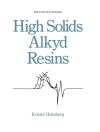The book comprehensively charts a way for industry to employ adhesively bonded joints to make systems more efficient and cost-effective
Adhesively bonded systems have found applications in a wide spectrum of industries (e.g., aerospace, electronics, construction, ship building, biomedical, etc.) for a variety of purposes. Emerging adhesive materials with improved mechanical properties have allowed adhesion strength approaching that of the bonded materials themselves. Due to advances in adhesive materials and the many potential merits that adhesive bonding offers, adhesive bonding has replaced other joining methods in many applications.
Containing nine articles written by world-renowned experts, the book deals with the advances in theoretical and computational modeling as well as the design and experimental aspects of adhesively bonded structural systems. Stress analysis and strength prediction of adhesively bonded structural systems, considering a range of material models under a variety of loading conditions, are discussed. Finite element modeling using macro-elements is elaborated on. Recent developments in modeling and experimental aspects of bonded systems with graded adhesive layers and dual adhesives are described. Simulation of progressive damage in bonded joints is addressed. A novel vibration-based approach to detect disbonding and delamination in composite joints is also discussed.
Readership
The book is central to a range of engineers including mechanical, reliability, construction and surface engineers as well as materials scientists who are engaged in the mechanics of structural adhesive joints. Industries that will use this book include aerospace, electronics, biomedical, automotive, ship building, and construction.
Spis treści
Preface xiii
Acknowledgements xv
1 Stress and Strain Analysis of Symmetric Composite Single Lap Joints Under Combined Tension and In-Plane Shear Loading1
Jungmin Lee and Hyonny Kim
1.1 Introduction 2
1.2 Equations and Solution 3
1.3 Solution Verifi cation 13
1.4 Yield Criterion 18
1.5 Case Studies 19
1.6 Summary 21
References 22
2 Finite Element Modeling of Viscoelastic Behavior and Interface Damage in Adhesively Bonded Joints 23
Feifei Cheng, Ö. Özgü Özsoy and J.N.Reddy
2.1 Introduction 23
2.2 Finite Element Analysis of Viscoelastic Adhesively Bonded Joints 27
2.3 Damage Analysis of Viscoelastic Adhesively Bonded Joints33
2.4 Summary and Conclusions 43
Acknowledgements 44
References 44
3 Modeling of Cylindrical Joints with a Functionally Graded Adhesive Interlayer 47
S. Kumar
3.1 Introduction 48
3.2 Axisymmetric Model 52
3.3 Constitutive Models of the Adherends and FMGB Adhesive62
3.4 Variational Approach 62
3.5 Solution Procedure 68
3.6 Results and discussion 69
3.7 Summary 80
References 86
4 A Simplifi ed Stress Analysis of Bonded Joints Using Macro-Elements 93
E. Paroissien, F. Lachaud, and T. Jacobs
4.1 Introduction 94
4.2 Linear Elastic 1D-Bar and 1D-Beam Models 96
4.3 Assuming a Non-linear Adhesive Material 110
4.4 Validation 118
4.5 Comparison With Finite Element Predictions 125
4.6 Conclusion 136
Acknowledgment 136
References 145
5 Simulation of Bonded Joints Failure using Progressive Mixed-Mode Damage Models 147
M.F.S.F. de Moura and J.A.G. Chousal
5.1 Introduction 148
5.2 Cohesive Damage Model 149
5.3 Measurement of Cohesive Parameters 153
5.4 Continuum Damage Models 161
5.5 Conclusion 168
References 170
6 Testing of Dual Adhesive Ceramic-Metal Joints for Aerospace Applications 171
E.A.S. Marques, Lucas F.M. da Silva and C. Sato
6.1 Introduction 172
6.2 Experimental Details 173
6.3 Results 181
6.4 Conclusions 188
Acknowledgments 190
References 190
7 Modelling of Composite Sandwich T-Joints Under Tension and Bending 191
J.H. Tang, I. Sridhar, G.B. Chai and C.H. Ong
7.1 Introduction 192
7.2 Description of the Experiment 193
7.3 Description of the Finite Element Model 196
7.4 Description of the Peel Stress Model: Strength of Materials Approach 199
7.5 Results and Discussion 202
7.6 Concluding Remarks 211
Acknowledgement 212
References 217
8 Strength Prediction Methods for Adhesively Bonded Lap Joints between Composite-Composite/Metal Adherends219
P.K. Sahoo, B. Dattaguru, C.M. Manjunatha and C.R.L.Murthy
8.1 Introduction 220
8.2 Strength Prediction Using Characteristic Distances in Problems with Singular Stresses 224
8.3 Strength Prediction in Aluminium-Aluminium Joints 225
8.4 Strength Prediction in CFRP-Aluminium and CFRP-CFRP Joints229
8.5 Results and Discussion 232
8.6 Conclusions 234
Acknowledgments 235
References 235
9 Interface Failure Detection in Adhesively Bonded Composite Joints Using a Novel
Vibration-Based Approach 237
Ramadan A. Esmaeel and Farid Taheri
9.1 Introduction 238
9.2 Conventionally Used Non-destructive Techniques (NDTs) for Damage Detection 238
9.3 Motivation and Methodology 240
9.4 Experimental Procedure 243
9.5 Experimental Results 248
9.6 Finite Element Modeling Investigation 250
9.7 Summary and Conclusions 258
Acknowledgments 260
References 260
O autorze
S. Kumar is ?currently a faculty member at the ?Masdar Institute of Science and Technology, Abu Dhabi, UAE. He obtained his Ph D in Solid Mechanics and Materials Engineering from the University of Oxford and an M. Phil from the University of Southampton. He has won?several awards including EPSRC Award at Oxford and a Rolls-Royce/DTI Fellowship at Southampton. He is a senior member of AIAA and is ?an active member of ASME and SAA UK.
Kashmiri Lal Mittal was associated with the IBM Corporation from 1972 through 1993. Currently, he is teaching and consulting worldwide in the broad areas of adhesion as well as surface cleaning. He has initiated, organized and chaired a large number of international symposia, and is the editor of more than 105 volumes dealing with adhesion measurement, adhesion of polymeric coatings, polymer surfaces, adhesive joints, adhesion promoters, thin films, polyimides, surface modification, surface cleaning, and surfactants.












